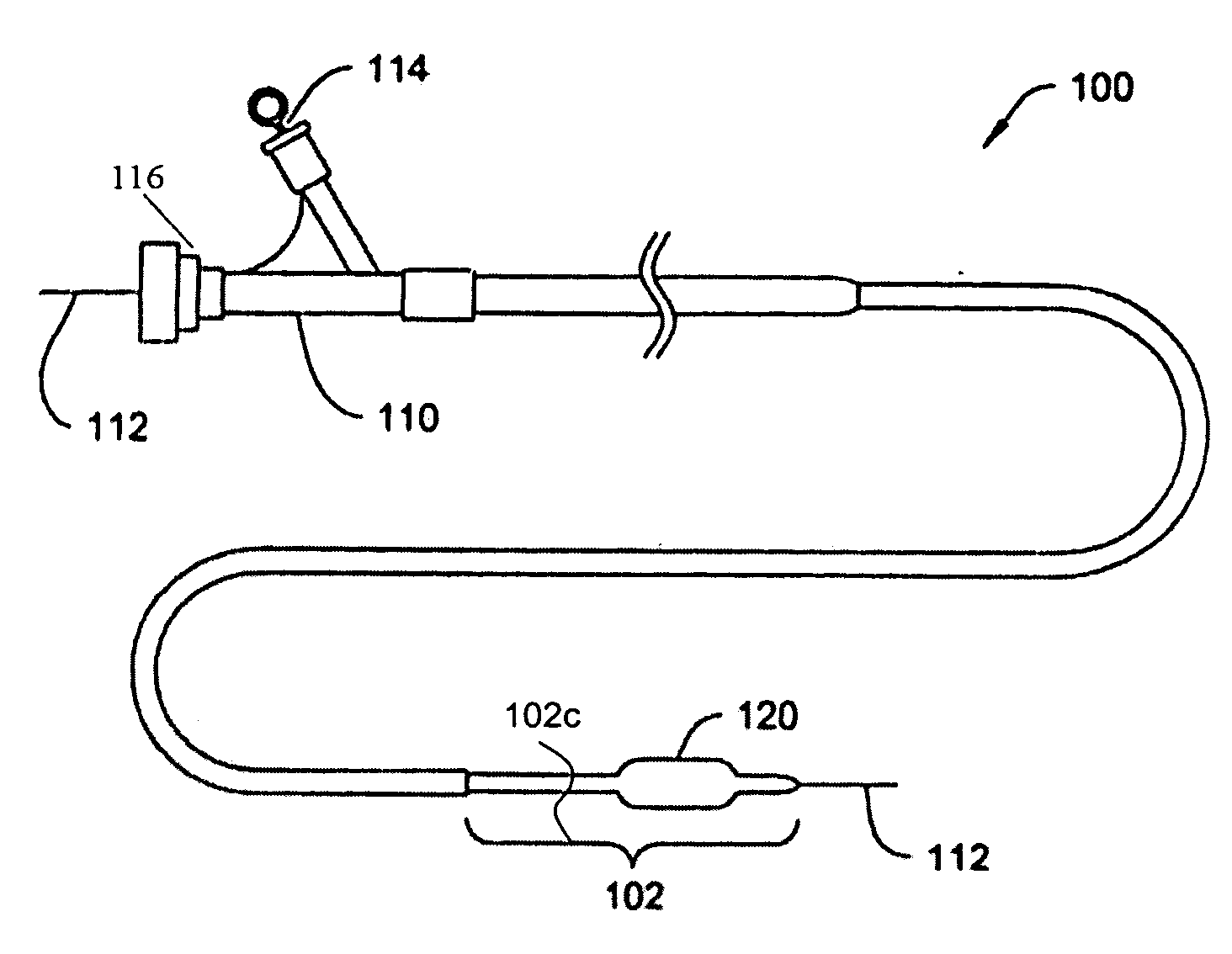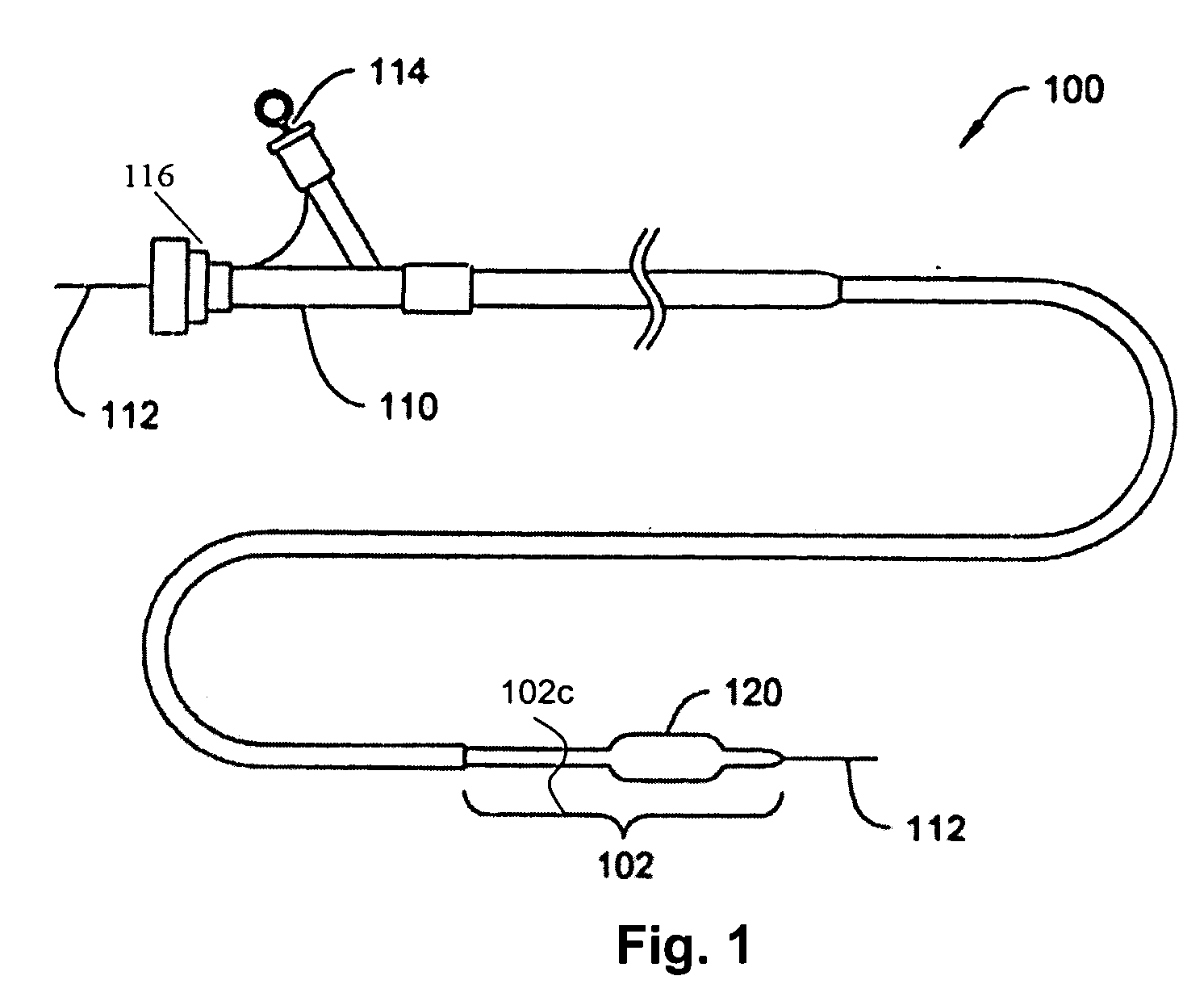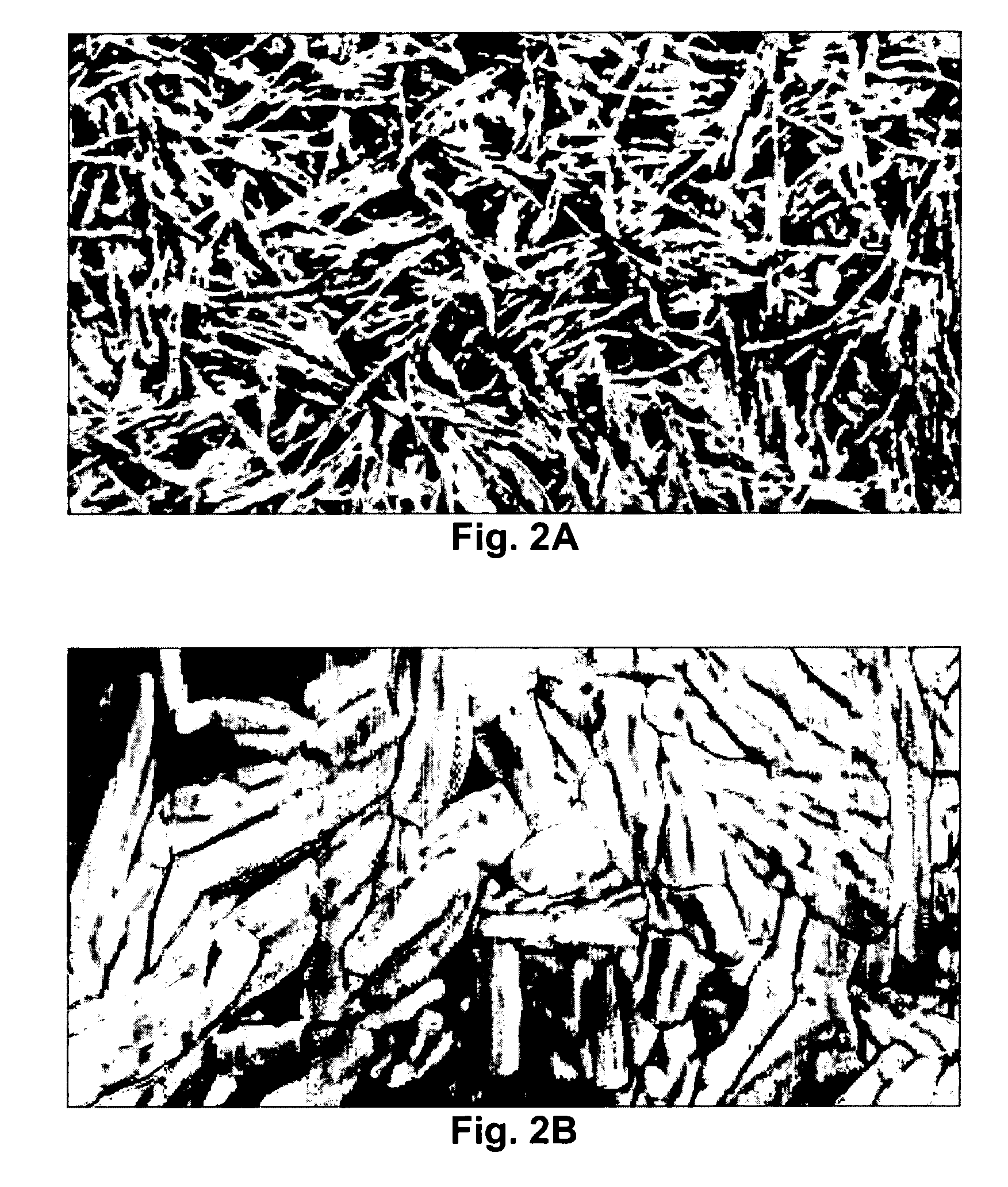Polymeric/ceramic composite materials for use in medical devices
a composite material and polymer technology, applied in the direction of surgery, liquid/solution decomposition chemical coating, catheter, etc., can solve the problems of attendant mechanical requirements, and achieve the effects of enhancing mechanical characteristics, toughness and/or abrasion resistance, and enhancing strength
- Summary
- Abstract
- Description
- Claims
- Application Information
AI Technical Summary
Benefits of technology
Problems solved by technology
Method used
Image
Examples
example
[0046] Solutions and films are provided along the lines described in Sforça, M. L., et al., “Hybrid membranes based on SiO2 / polyether-b-polyamide: morphology and applications,”Journal of Applied Polymer Science, Vol. 82, pp. 178-185, 2001.
[0047] Pebax® 4033 pellets are dissolved in 1-butanol / 1-propanol (70 / 30 ratio) at reflux temperature for 4 hours. TEOS is added to the PEBAX solution in an amount of 15 or 25 wt % (based on the total Pebax and TEOS weight), while stirring at room temperature (ca. 25° C.). This is followed by the addition of 0.15M HCl (TEOS / H2O ratio=1 / 4). The solution is stirred for 24 hours at room temperature.
[0048] Casting solutions are dropped into Petri dishes. The solvent is evaporated in an oven at 70° C. Further drying takes place in a vacuum oven at 80° C. for 1 day.
[0049] As can be seen in FIGS. 2A and 2B, microscopy of the resulting films shows elongated separated domains of the inorganic sol-gel derived ceramic component that increased in domain size...
PUM
| Property | Measurement | Unit |
|---|---|---|
| internal pressures | aaaaa | aaaaa |
| wt % | aaaaa | aaaaa |
| wt % | aaaaa | aaaaa |
Abstract
Description
Claims
Application Information
 Login to View More
Login to View More - R&D
- Intellectual Property
- Life Sciences
- Materials
- Tech Scout
- Unparalleled Data Quality
- Higher Quality Content
- 60% Fewer Hallucinations
Browse by: Latest US Patents, China's latest patents, Technical Efficacy Thesaurus, Application Domain, Technology Topic, Popular Technical Reports.
© 2025 PatSnap. All rights reserved.Legal|Privacy policy|Modern Slavery Act Transparency Statement|Sitemap|About US| Contact US: help@patsnap.com



